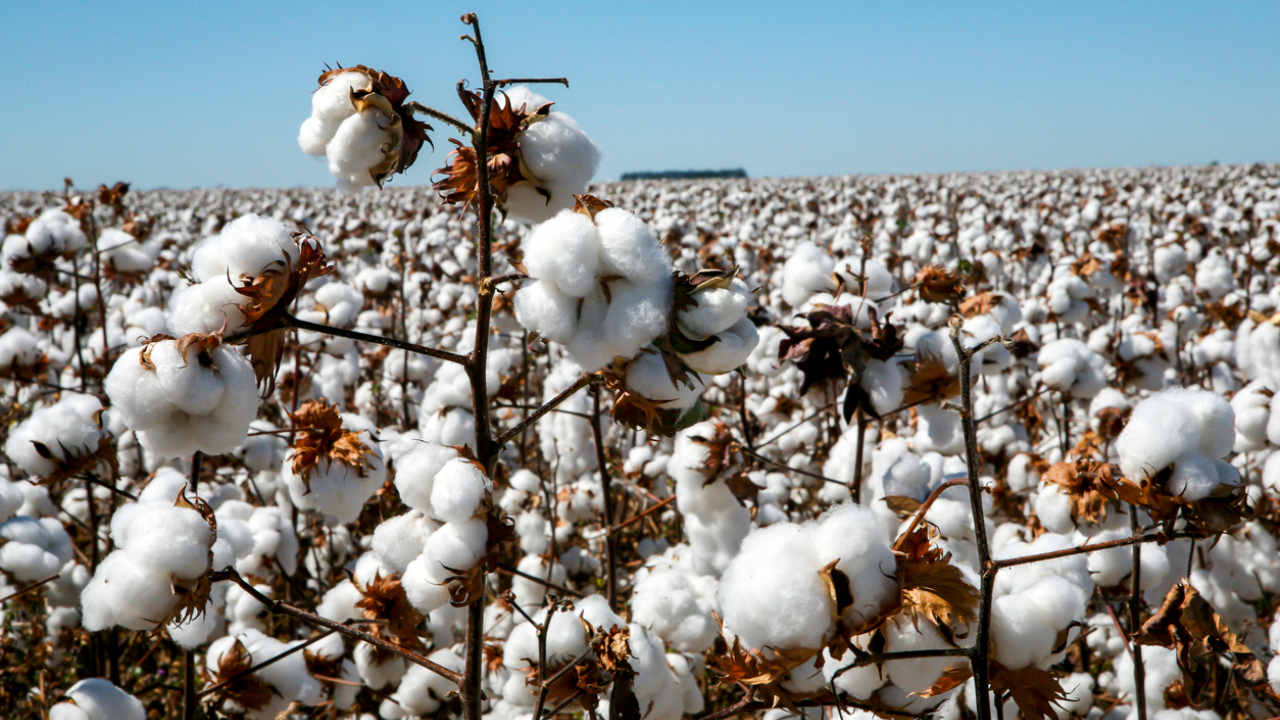The state hopes that new hybrids, better procurement, and more centers— 122 this year — will help farmers.
Published Sep 22, 2025 | 3:04 PM ⚊ Updated Sep 22, 2025 | 3:04 PM

Representational image. Credit: iStock
Synopsis: Telangana anticipates a 5–10% rise in cotton output for the October harvest, potentially reaching 53–55 lakh bales. However, heavy rains and boll rot threaten quality and yields. Prices in markets like Warangal are below the MSP of Rs 8,110/quintal. The state is enhancing procurement with CCI, digital registration, and helplines to support farmers.
Telangana is getting ready for the cotton picking season that begins in October. Farmers expect higher yields this year but are worried about quality after heavy rains.
Officials estimate cotton output could rise by about 5 to 10 percent. Production may touch 53–55 lakh bales compared to 50–51 lakh bales last year. This will keep Telangana as India’s third-largest cotton producer. Each bale weighs around Rs. 170 kg.
But rains and boll-rot attacks have hurt the crop. Prices are also a concern. In markets like Warangal, arrivals have just begun. Farmers are selling at rates Rs 900 to Rs. 1,000 below the Minimum Support Price (MSP) of Rs 8,110 per quintal.
In Kumarambheem–Asifabad district, cotton arrivals will start only in early November.
“In our district, arrivals will be late. Last year we received about 18 lakh quintals. We expect similar numbers and a little more, though some damage cannot be ruled out,” Ashwak Ahmad, District Marketing Officer, told South First.
In Warangal’s Enumamula Market Yard, prices are around Rs 7,440 per quintal. With the Cotton Corporation of India (CCI) yet to start procurement, farmers are selling at market prices. Many fear holding cotton due to risk of damage.
Cotton is grown widely across Telangana. Major districts include Nalgonda, Adilabad, Sangareddy, Nagarkurnool, Warangal, Nirmal, Asifabad, Mahabubabad, Jayashankar Bhupalapally, and Kamareddy.
The season began well. Good early monsoon rains helped farmers sow nearly 99 percent of the normal area by mid-August. But late August rains triggered boll rot – a fungal disease. Farmers fear it may cut yields by 20–30 percent in affected areas.
Telangana grows mostly medium-staple Bt hybrids with fiber lengths of 20–25 mm. In good conditions, these give 10–12 quintals per acre. But in some areas like Adilabad and Warangal, yields have dropped to 6–9 quintals per acre. Pest attacks and stunted growth have added to the damage.
“The rains came at the worst time,” said A Padma Reddy, a farmer from Adilabad.
“We expected a bumper harvest with the MSP hike, but boll rot has hit us hard,” he added.
The MSP for medium-staple cotton was raised to Rs 8,110 per quintal this year, up from Rs 7,121 last season. But in markets like Warangal (Rs 7,500/quintal) and Jammikunta (Rs 5,500/quintal), prices remain lower. Traders cite global oversupply and poor quality due to rains.
Telangana Agriculture Minister Thummala Nageswara Rao has asked CCI to strictly ensure MSP procurement. He announced direct bank payments via Aadhaar verification. He stressed that Telangana cotton has unique quality and must fetch fair prices.
Still, many farmers remain doubtful. “MSP is a lifeline. But if procurement is delayed and prices stay low, small farmers will suffer,” said the farmer from Adilabad.
On September 19, 2025, Rao met CCI officials to plan for the season. They agreed to set up a Command Control Room to track daily operations. CCTV cameras will be installed at procurement centers and ginning mills. Local monitoring committees will check weighing and quality.
A toll-free number (1800 599 5779) and WhatsApp helpline (88972 81111) were launched for farmer complaints.
CCI is also pushing digital registration. Its “Kapas Kisan” app allows farmers to book slots for procurement. Agricultural officers will train farmers, including tenants who can register via OTP with landowner approval. The minister also warned transport unions not to overcharge for moving cotton to mills.
Nationally, cotton output in 2025–26 is projected at 325–340 lakh bales, up from 294 lakh bales last year. The area under cotton has fallen to 113.13 lakh hectares, but better yields are expected. Telangana’s share is 15–16 percent, behind Gujarat and Maharashtra.
The state hopes that new hybrids, better procurement, and more centers— 122 this year — will help farmers. But challenges remain. Boll rot, weak prices, and transport hurdles may eat into profits.
(Edited by Amit Vasudev)
